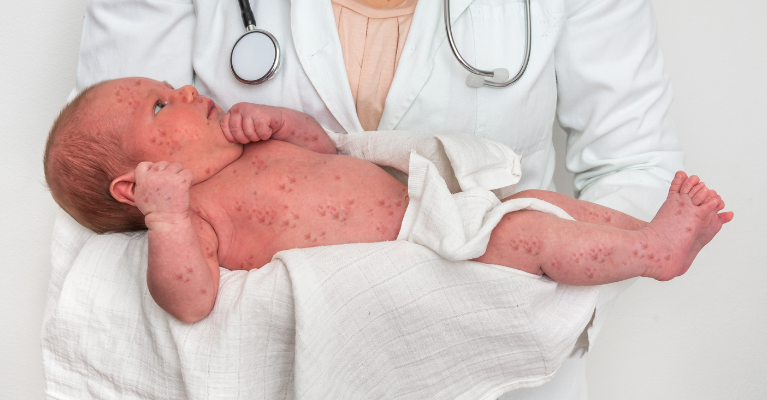News | Infectious Diseases | Immunisations
Global Measles Cases Surge by 20% in 2023 Amid Vaccine Gaps, Threatening Elimination Goals
Time to read: 01:07
Time to listen: 02:46
Published on MedED: 18 November 2024
Type of article: News
MedED Catalogue Reference: MNG0061
Category: News
Category Cross-reference: Public Health, Infectious Diseases
Keywords: measles, vaccination, immunisation mortality, WHO
Top
Type of article: News
MedED Catalogue Reference: MNG0061
Category: News
Category Cross-reference: Public Health, Infectious Diseases
Keywords: measles, vaccination, immunisation mortality, WHO
Top

18 November 2024, 12:15
According to a new report released by the WHO and CDC last week, global measles cases surged to an estimated 10.3 million in 2023, a 20% increase from 2022, driven by inadequate immunization coverage.
The report - Progress Toward Measles Elimination Worldwide, 2000–2023 - found that despite only two vaccine doses being required to prevent measles, over 22 million children missed their first dose, and only 74% received the second dose. This falls short of the 95% coverage needed to prevent outbreaks.
The rise in cases led to large or disruptive outbreaks in 57 countries, mainly in Africa, Eastern Mediterranean, and South-East Asia, with nearly half occurring in Africa.
Although measles deaths decreased by 8% to 107,500, primarily due to better healthcare access in some regions, the majority of fatalities were children under 5 years old. Survivors often face severe complications like blindness, pneumonia, and encephalitis.
Although measles deaths decreased by 8% to 107,500, primarily due to better healthcare access in some regions, the majority of fatalities were children under 5 years old. Survivors often face severe complications like blindness, pneumonia, and encephalitis.
The measles elimination goal under the Immunization Agenda 2030 is at risk, with only 82 countries achieving or maintaining elimination. Brazil's re-verification highlighted success in the Americas, the only region without major outbreaks.
WHO urges urgent action to improve routine immunization, particularly in vulnerable and conflict-affected areas.
Strengthening disease surveillance, including through the Global Measles Rubella Laboratory Network, is critical for detecting and responding swiftly to outbreaks.
This coordinated effort is essential to protect children and curb the rising global threat of measles.
Strengthening disease surveillance, including through the Global Measles Rubella Laboratory Network, is critical for detecting and responding swiftly to outbreaks.
This coordinated effort is essential to protect children and curb the rising global threat of measles.
This story was compiled from various resources including:
Back to top
Disclaimer
This article is compiled from various resources researched and compiled by the contributor. It is in no way presented as an original work. Every effort has been made to correctly attribute quotes and content. Where possible all information has been independently verified. The Medical Education Network bears no responsibility for any inaccuracies which may occur from the use of third-party sources. If you have any queries regarding this article contact us
Fact-checking Policy
The Medical Education Network makes every effort to review and fact-check the articles used as source material in our summaries and original material. We have strict guidelines in relation to the publications we use as our source data, favouring peer-reviewed research wherever possible. Every effort is made to ensure that the information contained here is an accurate reflection of the original material. Should you find inaccuracies, out of date content or have any additional issues with our articles, please make use of the contact us form to notify us.
Rating


